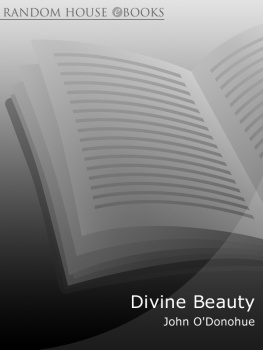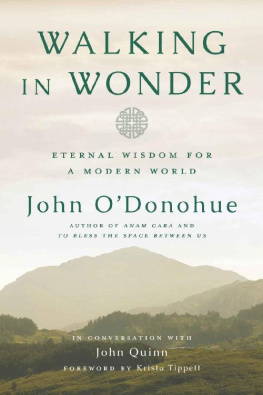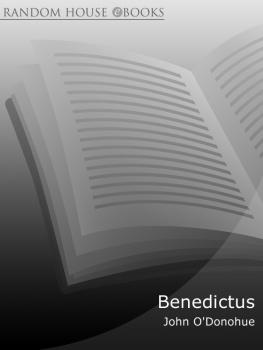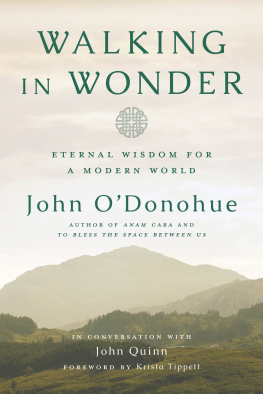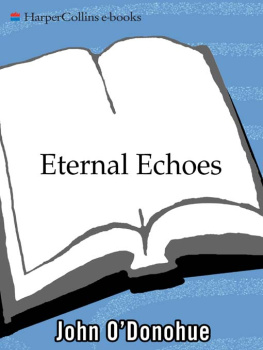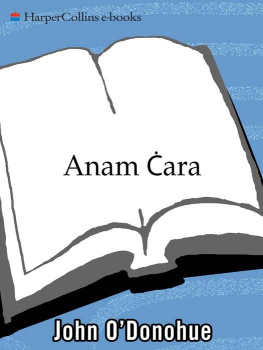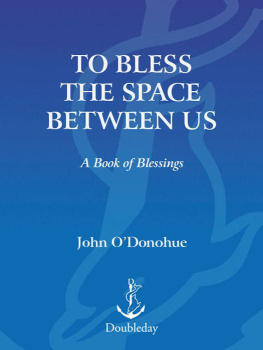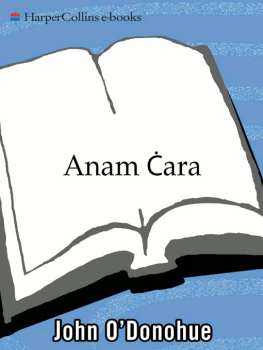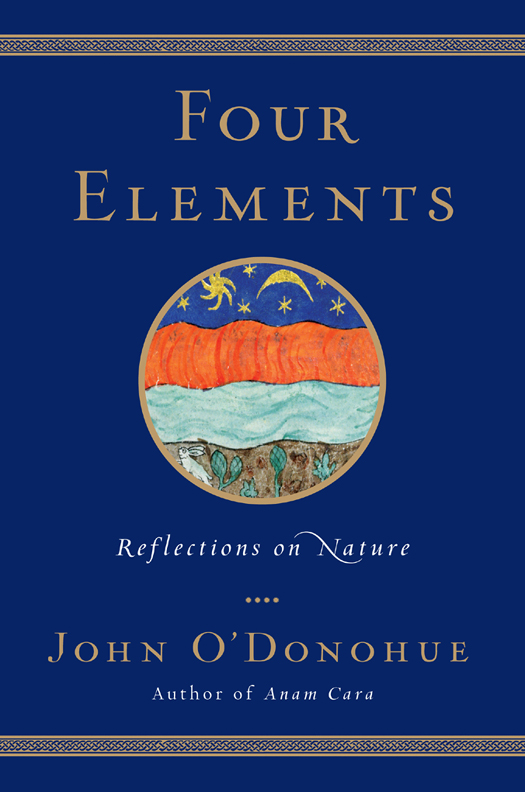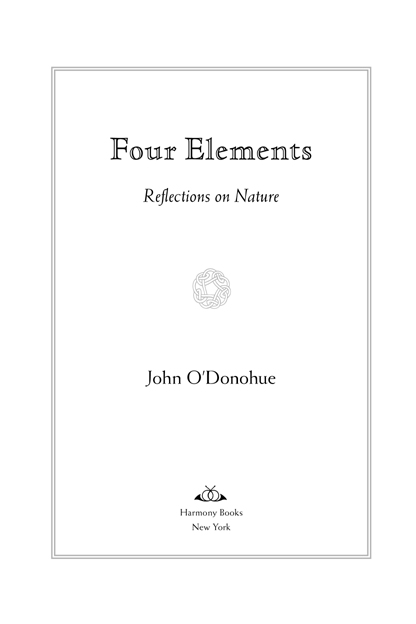Also by John ODonohue
ANAM CARA
Spiritual Wisdom from the Celtic World
ETERNAL ECHOES
Exploring Our Hunger to Belong
DIVINE BEAUTY
The Invisible Embrace
BENEDICTUS
A Book of Blessings
CONAMARA BLUES
(poetry)
ECHOES OF MEMORY
(poetry)
Copyright 2010 by The Estate of John ODonohue
Foreword 2010 by Pat ODonohue
All rights reserved.
Published in the United States by Harmony Books,
an imprint of the Crown Publishing Group,
a division of Random House, Inc., New York.
www.crownpublishing.com
Harmony Books is a registered trademark and the Harmony Books colophon is a trademark of Random House, Inc.
Stone was originally published in Ireland in 1994, and Air, Water, and Fire were originally published in Ireland in 1995. This work was originally published in slightly different form in Great Britain by Transworld Ireland, an imprint of Transworld Publishers, a division of The Random House Group Ltd., London, in 2010.
The poems by John ODonohue included in the foreword were originally published in Great Britain in Benedictus: A Book of Blessings by Bantam Press, an imprint of Transworld Publishers, a division of The Random House Group Limited, London, in 2007.
Library of Congress Cataloging-in-Publication Data is available upon request.
eISBN: 978-0-307-71762-7
Jacket design by Kathleen DiGrado
Jacket art: Bibliotheque Mazarine, Paris/Archives Charmet/
The Bridgeman Art Library
v3.1
CONTENTS
AIR
The Breath of God
WATER
The Tears of the Earth
FIRE
At Home at the Hearth of Spirit
STONE
As the Tabernacle of Memory
FOREWORD
A S WE JOURNEY from the womb of the sea with our gaze of longing fixed on the stars, we have stopped off on this earth for a short spell of belonging. The unity of the four elements is what constitutes and sustains our existence in this world.
This beautiful publication of Johns first four booklets on the elementsAir, Fire, Stone and Wateris a revisiting of the sowing fields where he first spread his thought. These seeds of thought sprouted in two simultaneous directions, as in the growth of a tree. Downward and deeper into the earth source where the depth and spread of the roots determined the height and extension of the branches. On these branches blossomed the fruit of Anam ara, Eternal Echoes, Divine Beauty, Echoes of Memory, Conamara Blues and his final creation, Benedictus. It was as if these inspiring books, having been born of the elements, finally formalized their blessing in the voice of Benedictus.
I sit and write here in this valley of Johns birth gazing at the landscape with eyes that battle against familiarity. I wonder in amazement at the great ability he had to walk these mountains with a new, fresh sense of adventure on each pilgrimage.
I think that its a beautiful challenge to try to look at our own lives and the lives of our loved ones with new eyes. The treasure here is that we can become a lot more excited by possibility and a lot less bored at the knowing that has numbed us.
Here in this valley, the mountains rise up to the horizon in gentle slopes all around. Flat terrain always seems clouded by distance and is always running away from the eye. The landscape of this valley raises itself up in a call for attention. The mountains seem to tempt us to climb them. On reaching the horizon that calls us, the mountain presents another one and then another, as if enticing us higher into their dream each time. As Hans Georg Gadamer writes in Truth and Method:
A horizon is something towards which we move, but its also something that moves along with us.
It is only on the north-west side of the valley that the horizon suddenly drops down to earth in order to guide the river on its final journey into the sea. The river snakes down through the landscape in a gentle flow as if it needs time to harvest all the sounds and moments of the valley. Then it returns them to the eternity of the sea. John often used this as a metaphor for the flow of life, beautifully depicted in his poem Fluent:
I would love to live
Like a river flows,
Carried by the surprise
Of its own unfolding.
This valley in which John was born and raised was the shell of his soul. He always referred to it as, a private valley with its own private sky.
We were born into a farming family and our first lessons were learnt through the medium of nature. The tender guides to our early learning were parents and an uncle who walked so lightly and with a comfortable and natural step along the landscape of their daily lives. It was a simple yet treasured childhood that we were waking up to, the ideal nest for Johns amazing intellect. The interplay between farmer and the elements was a poem without words, the echo of which would always return to him.
The air could hold the breeze of the rain or the wind of warmth to the discerning nose.
The stone carved its memory deep into the hands that chiseled it.
Fire was the life in the hearth which was the center of the home.
Water introduced itself to us from its most natural source in streams and wells.
As children we would be sent to the well for a bucket of spring, and always the stream gurgled on, carrying its blessing further on to where it was needed.
As a childs mind begins to awaken to this world, the doorway to the eternal closes behind and time seems to introduce itself more slowly and gently at first. Our days of childhood here in this valley seemed long. There werent any of the modern technological distractions to kidnap us from our days. Nights would bring neighbors to our hearth where talk would fill the air as stories told their news and allowed memories to dance.
Then, if we were left up late enough, we could witness the planning of the next days work. This was done in such a way that brought continuity between the day that had passed and the day that was to come. In front of the fire was where the link was forged and opened to introduce the facts of a lived day to the possibilities of the approaching dawn. It was as if the living of each day dreamt its plan through the night. There was an innocence and naturalness about it.
To a young mind, work seemed to be the price that was gladly paid for the privilege of living so closely with the earth. Work was a real conversation with the landscape. It was not an abuse or raiding of the landscape. It was amazing to learn how to work in this context. Instead of being told it has to be done, you would hear how the work needs to be done or wants to be done. Of course there were times when the work lapsed into drudgery but we were taught to find our own rhythm within work. This helped us to keep going when it got boringly repetitive or when the connection became severed.

Every spring the turf (peat) would be cut and saved and brought home to keep the fire element sustained in the hearth during winter. On our first day in the bog we would be told to take it easy and not overdo it. The practicality of this was to ensure that energy, desire and determination would last for the following two or three weeks and not spend itself all on the first day. It also presented us with the space and time to re-awaken our own rhythm within this particular kind of work.


